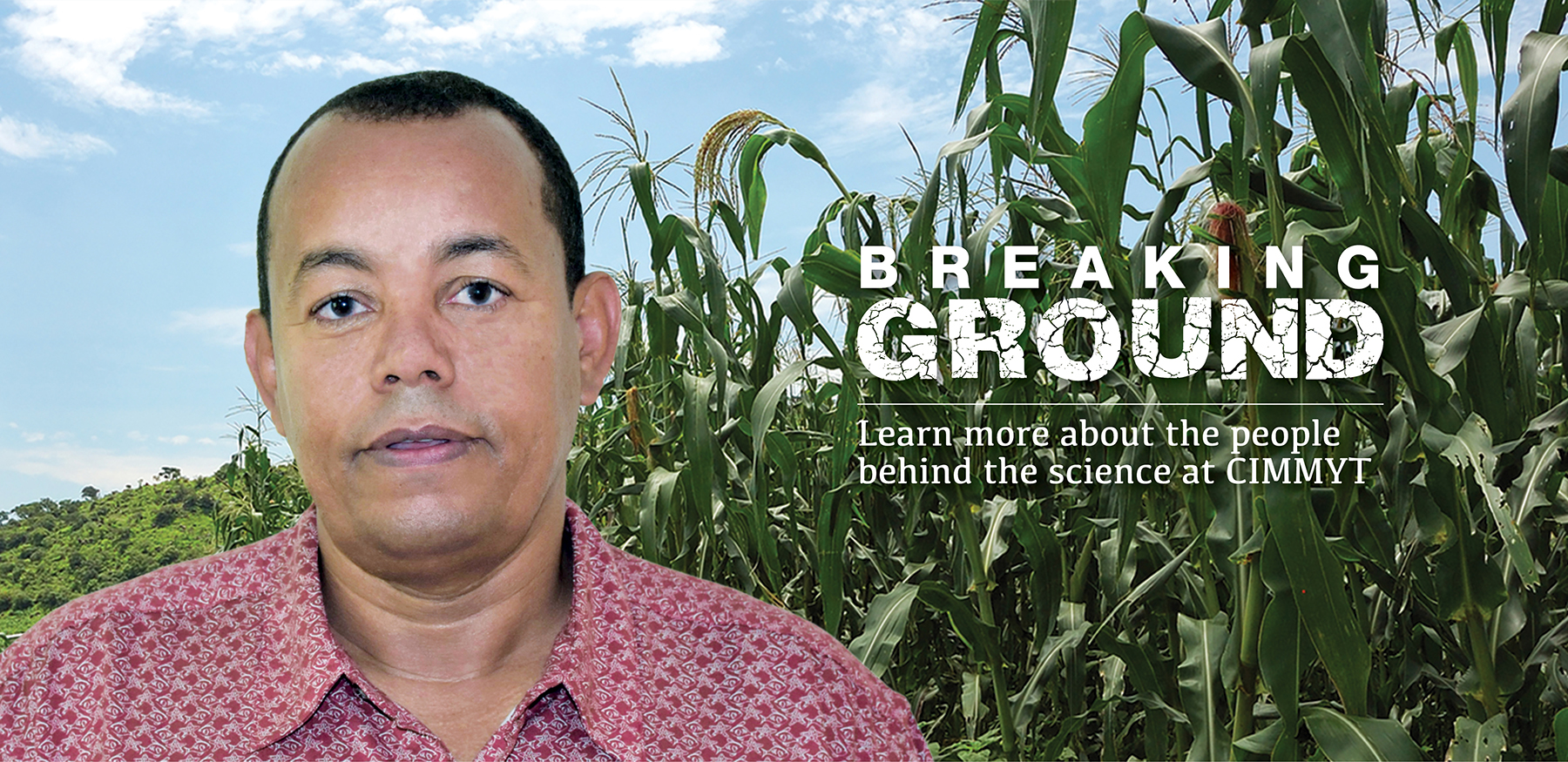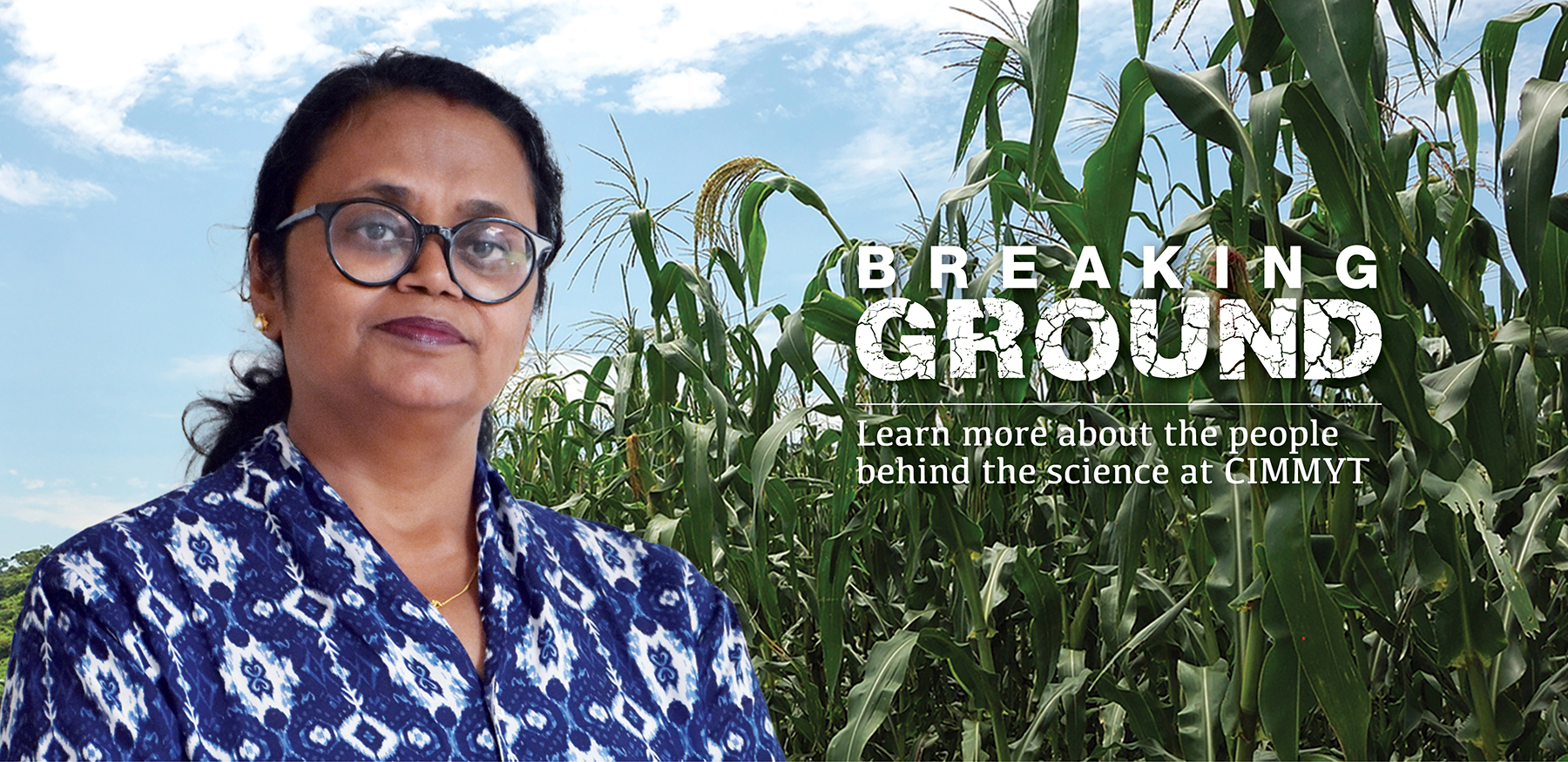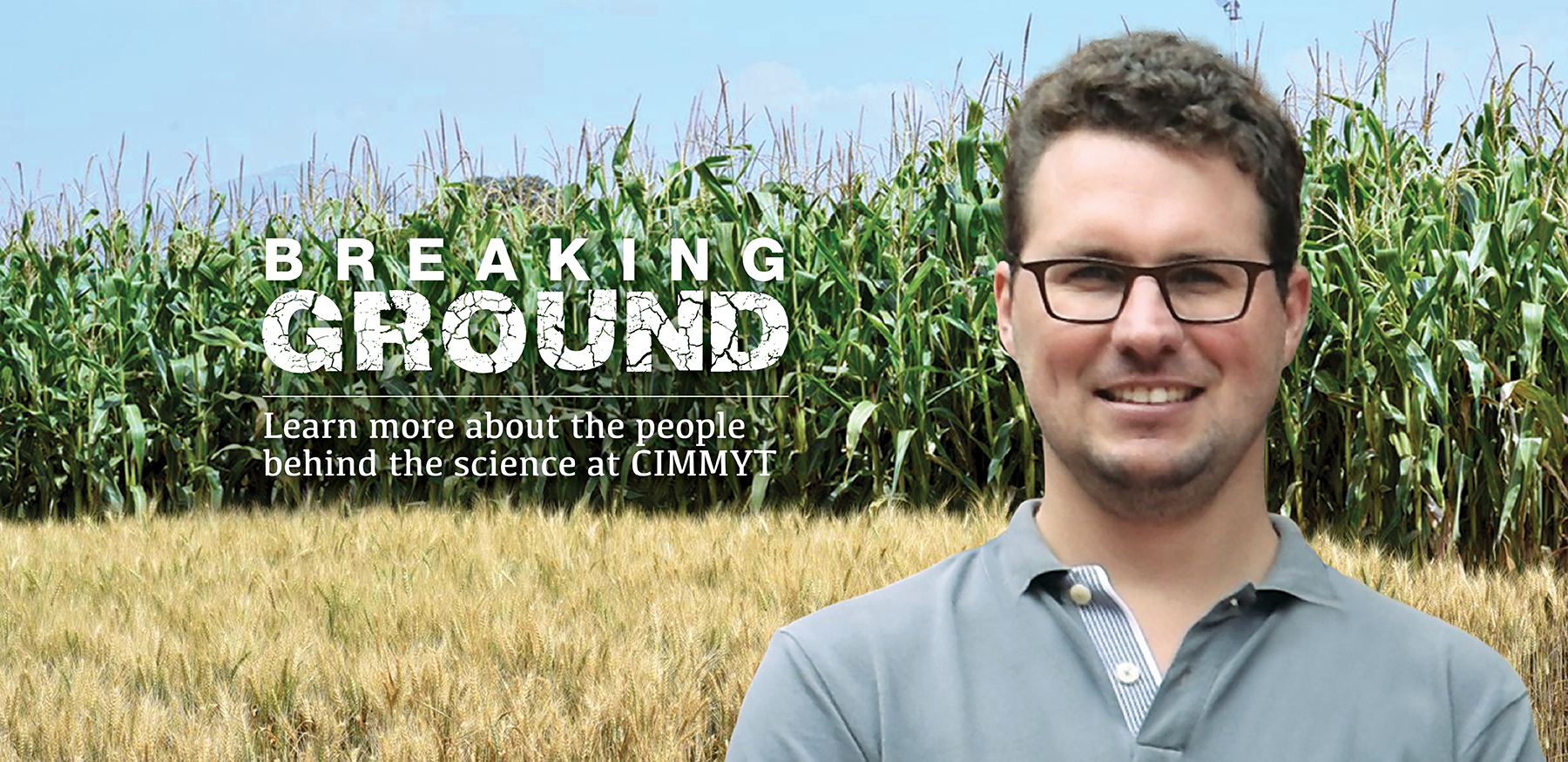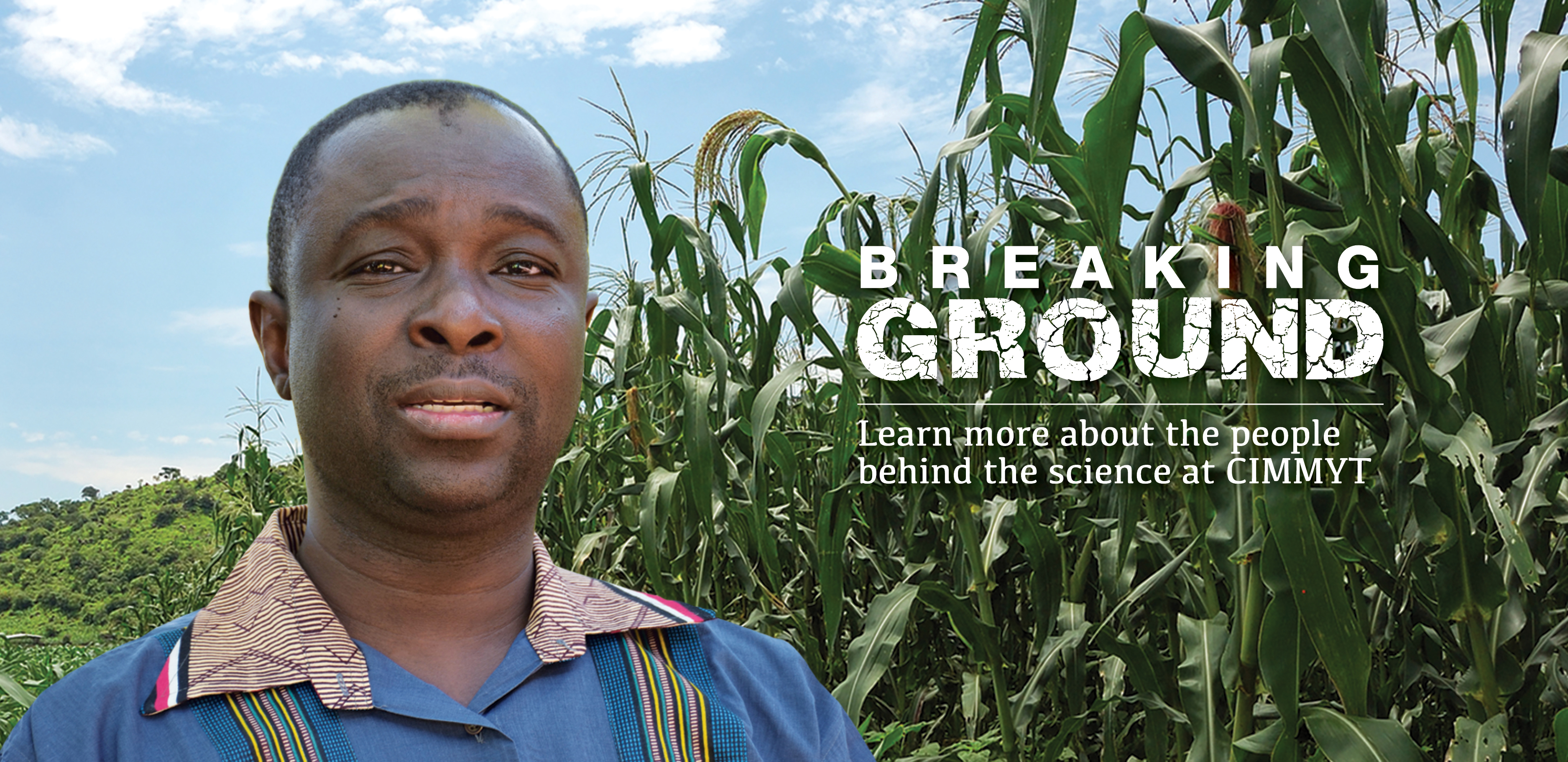About 25 years ago, Yoseph Beyene first heard about the International Maize and Wheat Improvement Center (CIMMYT) from one of his professors, back when he was pursuing his undergraduate degree in Plant Science at Haramaya University in Ethiopia. “The professor, whom I regard as a great mentor, (…) always told me that if I ever got an opportunity to work at CIMMYT, I should not hesitate to take it up, as it was a great place to conduct maize breeding,” recollects Beyene, now a maize breeder at CIMMYT. He grew up in Alem Ketema, a village located 190 km north of Addis Ababa, Ethiopia’s capital.
In retrospect, he did not know this would change his perspective on how he viewed crops, especially maize, on smallholder farms. Like many other families in Alem Ketema, his family attended to their small farm to meet their food and nutritional needs. Most people practiced subsistence farming, intertwined with livestock keeping, on small plots that were typically less than 2 hectares. At the backyard of his family’s farm, different crops such as maize, sorghum and teff were grown. As a child, he never quite registered in his mind that farmers grew mainly recycled seed. “In hindsight, I can say that the yield of a crop such as maize was just about 1.5 tons per hectare at the time,” he reckons.
Such low yield potential meant feeding relatively large family sizes of about seven people was a tall order. It did not help that crops such as maize and wheat were frequently affected by diseases and pests and erratic rains, which diminished yields. It was not until his high school days when he had firsthand experience with high-yielding improved crop varieties. As part of the farm management class, he actively participated in the school’s farm management unit. He got to appreciate the yield variation between improved and local varieties, grown on the school plots. These improved seed, he quickly realized, were the ideal antidote to the low yield farmers obtained.
Struck by an epiphany
“This was like a eureka moment for me. When I realized that it was possible to improve and deliver desirable seed varieties that could double farmers’ yields, I decided to study plant breeding at the university. If only the farmers back in my village knew about the improved seed and adopted them at the time, it could not only have helped solve the problems of food insecurity but also bettered their livelihoods,” he ponders.
When he enrolled for a PhD in Plant Breeding and Genetics at the University of Pretoria, he did his research in highland maize in collaboration with CIMMYT in Ethiopia. Upon completion, he was appointed as a senior cotton breeder at South Africa’s Agricultural Research Council (ARC), where he worked for one and a half years.
“One day, I saw an advertisement in which CIMMYT was looking for a maize breeder. I applied, went for the interview and was happy to get the position. That was in 2008,” he says.
The right tool for the right variety
Biotic and abiotic stresses are becoming more frequent and vicious because of climate change and there is growing urgency to tackle them to avert future potential food crises.
Beyene’s current research focuses on developing high-yielding and climate-resilient maize inbred lines and hybrids for sub-Saharan Africa. He uses conventional and molecular breeding, including integration of novel tools and techniques, such as doubled haploid, and marker-assisted recurrent section and genomic selection. Over the years, he has developed at least 25 new drought-tolerant maize hybrids recommended for commercialization in Kenya, Mozambique, Uganda, South Africa and Tanzania. Currently, 23 seed companies have been engaged to produce and market the released hybrids through sub-licensing.
Presently, as the Regional Breeding Coordinator for Africa, he is responsible for assessing the progress of implementing product profile-based breeding, appropriate germplasm exchange within and across regional breeding hubs, and ascertaining the progress on new initiatives by regional breeding teams.
A long-term endeavor
Breeding is a costly, time consuming and complex exercise. “It takes at least 10 years from crossing to release using pedigree breeding because the hybrids should be evaluated in multiple years and tested in multiple locations, which increases costs and time of the breeding cycle. You have to appreciate the fact that you are not breeding for now but for the future,” he says.
“As a breeder, you have to keep testing new tools and techniques to make breeding more efficient. Yet, resources are not always constant but inadequate. Stresses are becoming more urgent and vicious, despite increased urgency in tackling them to avert a potential food crises,” he says.
To reduce the time and accelerate genetic gains, Beyene and his colleagues at CIMMYT are currently applying the genomic selection technique for maize breeding, using it to predict the performance of un-phenotyped genotypes at early stage of testing. He and his colleagues recently published their research comparing genomic selection with phenotypic selection, as used by CIMMYT’s maize breeding program in sub-Saharan Africa. They found that the use of genomic selection for yield under optimum and drought conditions in tropical maize can produce selection candidates with similar performance as those generated from conventional phenotypic selection, but at a lower cost. They concluded that this strategy should be effectively incorporated into maize breeding pipelines to enhance breeding program efficiency.
Breeding challenges notwithstanding, Beyene feels fulfilled whenever he sees a farmer has planted a variety that he helped breed. “The epitome of my inspiration is when there is a smile on their face because of the variety’s good performance on their farm,” he says.
Interacting with the farmers and seed companies provides an opportunity for him to learn, understand their varietal preferences as well as appreciate the impact that his work has on their operations. He is also actively engaged in building the capcity of public and private partners, and supervising master’s and doctoral students from various countries. He has published more than 50 articles in journals.
The life of a breeder is not as lonely and boring as some would think. Beyene creates time to be with his three children, playing with them and helping with their homework, taking them out for social events. He also dedicates time to watch football, reality television, comedy and drama with his family.


 Nutrition, health and food security
Nutrition, health and food security 
